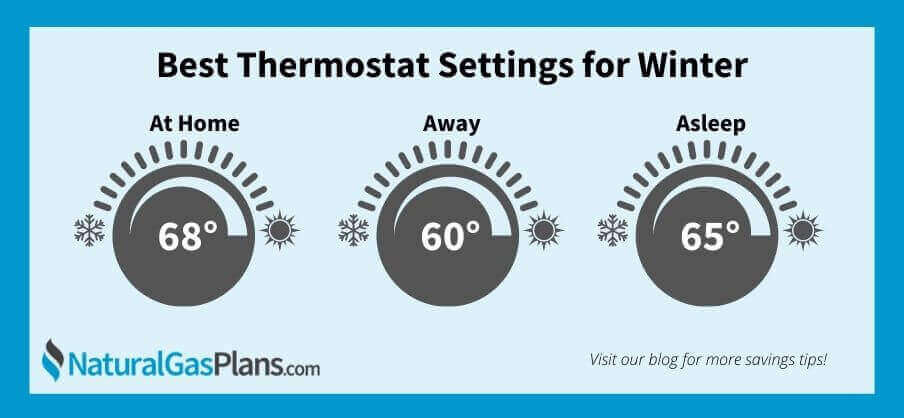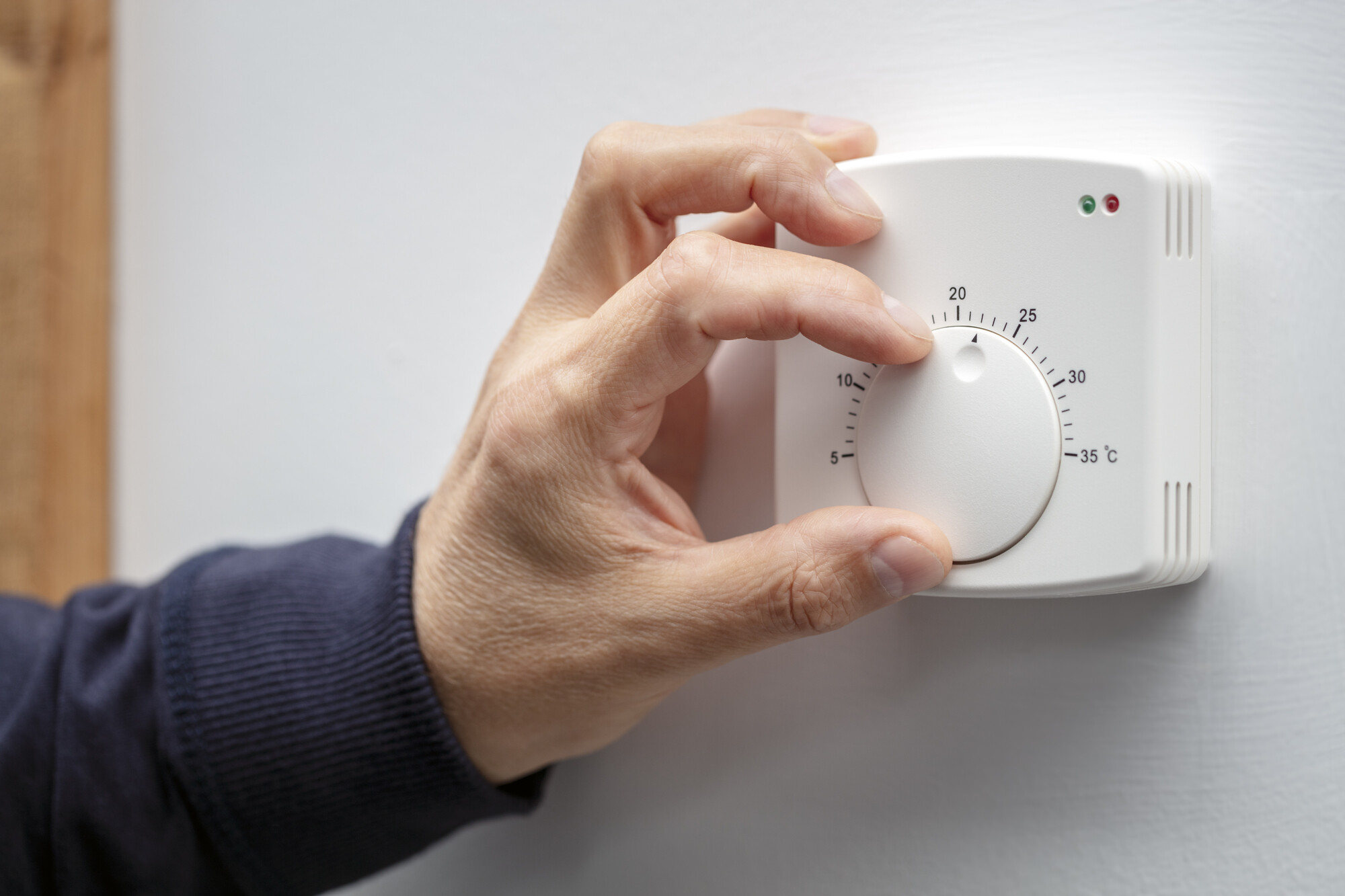What To Set The Thermostat In The Winter

It's the heart of winter, and a cold house is the last thing anyone wants. A malfunctioning thermostat is a common culprit behind a chilly home. This guide will walk you through troubleshooting thermostat issues, offering DIY fixes where appropriate and highlighting when it's time to call in the pros.
Understanding the Problem: A Cold House and the Thermostat
Imagine waking up on a frosty morning to a house colder than expected. The first thought often jumps to the thermostat. It controls your heating system, signaling when to turn on and off. When it malfunctions, your furnace might not kick in, leaving you shivering. Before panicking, let's systematically investigate the problem.
Step-by-Step Thermostat Troubleshooting
1. Safety First:
Before you begin, remember safety is paramount:
- Turn off the power to your heating system at the breaker box. This is crucial, especially when dealing with electrical components.
- If you smell gas, immediately evacuate your home and call your gas company or the fire department from a safe location. Do not attempt any repairs yourself.
2. Initial Checks: Batteries and Basic Settings
Start with the simplest solutions:
- Check the batteries: Many digital thermostats run on batteries. A low battery can cause erratic behavior or complete failure. Replace them with fresh batteries of the correct type.
- Verify the thermostat setting: Ensure the thermostat is set to "Heat" and the desired temperature is higher than the current room temperature. Seems obvious, but it's easily overlooked.
- Confirm the system switch: Some thermostats have a system switch (Heat/Off/Cool). Make sure it's set to "Heat".
3. Inspect for Dust and Debris
Dust accumulation can interfere with a thermostat's accuracy. Carefully clean it:
- Turn off the power (again, safety first!).
- Remove the thermostat cover. Some covers pop off, while others might have screws.
- Gently clean the inside with a soft brush or a can of compressed air. Be careful not to damage any components.
- Reassemble the thermostat and restore power.
4. Digital Thermostat Diagnostic Menu
Modern digital thermostats often have diagnostic menus that can provide valuable information:
- Consult your thermostat's manual. It will guide you on how to access the diagnostic menu.
- Look for error codes. These codes can pinpoint specific problems, like a faulty sensor or a communication error with the furnace.
- Note the error code and consult your thermostat's manual or search online for solutions. Some issues can be resolved with a simple reset.
5. Checking the Wiring (Proceed with Caution!)
Wiring issues can cause thermostat malfunctions. Only proceed with this step if you are comfortable working with electrical wiring. If not, call a qualified electrician or HVAC technician.
- Turn off the power to the heating system at the breaker box.
- Carefully remove the thermostat from the wall. Label each wire with masking tape and a pen before disconnecting it. This is crucial for proper reassembly. Common wire labels include R (power), W (heat), Y (cooling), G (fan), and C (common).
- Inspect the wires for any signs of damage, such as frayed insulation, corrosion, or loose connections.
- Tighten any loose screws on the terminal block.
- Use a multimeter to check for continuity between the wires. This requires knowledge of electrical testing procedures. If you're unsure, seek professional help.
- Reconnect the wires according to your labels. Double-check that each wire is securely connected to the correct terminal.
- Reattach the thermostat to the wall and restore power.
6. Inspecting the Furnace (Limited DIY Scope)
While the thermostat controls the furnace, the problem might lie within the furnace itself. For most furnace issues, it's best to call a qualified HVAC technician. However, here are a few basic checks you can perform:
- Check the furnace power switch: Make sure the furnace power switch (usually located on the side of the furnace) is in the "On" position.
- Check the furnace filter: A dirty air filter can restrict airflow, causing the furnace to overheat and shut down. Replace the filter with a clean one.
- Check the pilot light (for older furnaces): If your furnace has a pilot light, make sure it's lit. If it's out, follow the manufacturer's instructions for relighting it. If you smell gas, do not attempt to light the pilot light. Evacuate and call the gas company.
7. Thermostat Location and Airflow
The thermostat's location can significantly impact its performance:
- Avoid direct sunlight: A thermostat exposed to direct sunlight will register a higher temperature than the actual room temperature.
- Avoid drafts: Thermostats placed near drafts (windows, doors, vents) can trigger the heating system unnecessarily.
- Ensure proper airflow: Make sure the thermostat isn't obstructed by furniture or curtains. It needs to sense the room's temperature accurately.
8. Resetting the Thermostat
Sometimes, a simple reset can resolve thermostat glitches:
- Consult your thermostat's manual for specific reset instructions.
- Often, a reset involves pressing a combination of buttons or removing the batteries for a short period.
When to Call a Professional
While this guide provides basic troubleshooting steps, certain issues require the expertise of a qualified HVAC technician or electrician:
- Gas Leaks: If you suspect a gas leak, evacuate immediately and call the gas company.
- Electrical Issues: If you're uncomfortable working with electrical wiring or suspect a serious electrical problem, call a qualified electrician.
- Complex Furnace Repairs: Issues involving the furnace's internal components (e.g., blower motor, heat exchanger, gas valve) should be left to a professional.
- Thermostat Replacement: If you've tried all the troubleshooting steps and your thermostat still isn't working, you might need to replace it. Consider professional installation, especially for advanced thermostats or those requiring wiring modifications.
- Refrigerant Leaks: Do not attempt to handle refrigerant leaks as they require specialized equipment and training.
- You feel overwhelmed or unsure: It is better to be safe than sorry. If you have any doubts, contact a qualified HVAC technician.
Preventive Maintenance
Regular maintenance can help prevent thermostat and furnace problems:
- Replace the furnace filter every 1-3 months, depending on the type of filter and usage.
- Schedule annual furnace inspections by a qualified HVAC technician. They can identify potential problems before they become major issues.
- Clean the thermostat periodically to remove dust and debris.
- Consider a programmable thermostat to optimize energy efficiency.
Common Thermostat Types and Considerations
1. Mechanical Thermostats:
These are older, simpler thermostats that use a bimetallic strip to sense temperature. They are less precise than digital thermostats but are generally reliable.
* Troubleshooting: Check for dust and debris obstructing the bimetallic strip. Ensure the thermostat is level for accurate readings.2. Digital Non-Programmable Thermostats:
These thermostats offer a digital display and more precise temperature control. They do not have programming capabilities.
* Troubleshooting: Check the batteries. Look for error codes on the display.3. Digital Programmable Thermostats:
These thermostats allow you to set different temperatures for different times of the day, saving energy and money.
* Troubleshooting: Ensure the programming is correct. Reset the thermostat if it's malfunctioning. Check for network connectivity issues if it's a smart thermostat.4. Smart Thermostats:
These thermostats connect to your home's Wi-Fi network and can be controlled remotely via a smartphone app. They offer advanced features like learning algorithms and energy usage tracking.
* Troubleshooting: Check your Wi-Fi connection. Ensure the app is up to date. Contact the manufacturer's support if you're experiencing connectivity or software issues.Energy-Saving Tips
Setting your thermostat efficiently can save you money on your energy bill:
- Set it and forget it: Choose a comfortable temperature and leave it there. Avoid constantly adjusting the thermostat.
- Lower the temperature at night or when you're away: A few degrees lower can make a significant difference in energy consumption.
- Use a programmable thermostat: Set it to automatically lower the temperature when you're asleep or at work.
- Seal air leaks: Caulk and weatherstrip around windows and doors to prevent drafts.
- Insulate your home: Proper insulation helps retain heat and reduces energy consumption.
Final Thoughts
Troubleshooting a thermostat can be a manageable task with a systematic approach. By following these steps, you can often identify and resolve common issues yourself. Remember to prioritize safety and know your limits. When in doubt, don't hesitate to call a qualified professional. A warm and comfortable home is worth the peace of mind.










